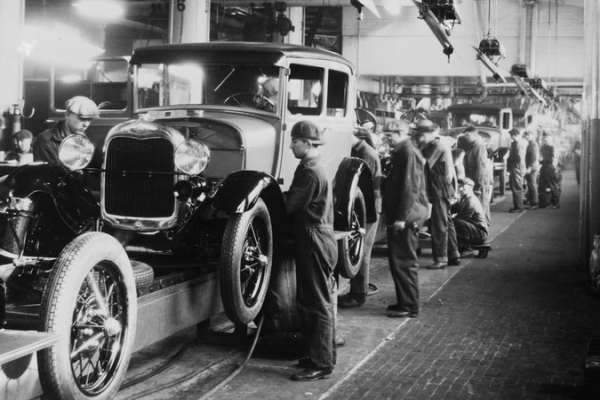Published on the 17/09/2018 | Written by Cincom

The changing world of manufacturing and CPQ…
When Henry Ford built his vertically integrated manufacturing process, it was a monument to his genius and to the modern manufacturing of that era. Raw material went in one end of a single building, and finished automobiles emerged from the other.
There was really only one option for potential customers: Do you or do you not want to buy a car? But people got picky fast. They wanted any colour but black; engine choices; and different transmissions, entertainment systems, premium interior finishes and the rest. As my car-selling friend says, “They want all the toys!”
Today, advanced manufacturing brings the possibility of unlimited options, pure customisation and the ability to fill orders for almost anything. Until now, products to be sold already existed – they had been designed, tested, priced and put on the market.
But advanced manufacturing promises even higher variability and product diversity. Much of this is reflected within the very depths of the products offered in the form of one-off enhancements and modifications made possible by additive manufacturing and other technologies.
A part is needed that looks like this, performs like that and is fabricated from this. The next logical question is, do we build it or buy it? This decision will be driven by all manner of variable conditions, and the answer to the question will frequently change based upon those conditions. This month we buy it, next month we build it.
The supply chain will need to include options for building items instead of merely supplying them, and the entire arena of contract manufacturing or manufacturing as a service will need to step up in this role.
What is the difference between manufacturers and makers? Here is my personal, short definition: Manufacturers build discrete products out of parts and assemblies. Makers build discrete products out of goo (fabrication material) that is assembled together to make fully configured products. Perhaps I’m oversimplifying things.
Makers as a “movement” see the manufacturing capacity as a community resource; a sort of centralised facility that offers all manner of advanced fabrication tools including 3D printers, laser and high-pressure water cutters and more. Anyone can use it or employ it to make anything they want to make. Individuals can make parts for busted appliances; companies can make parts or finished products.
Another vision would have a company like Amazon building maker centers in or around its distribution centers. Certain types of products could be built on-demand.
All of this changes CPQ (configure, price, quote), since it now needs to know how to handle products that aren’t even products yet.
The whole concept of CPQ is based on having total knowledge about the product to be sold and then a complete understanding of the customer’s needs. The scripted interview is a guided-selling process that brings sellers and buyers together to explore and evaluate needs, requirements and possible options. As the conversation evolves, it becomes more and more focused, and a solution in the form of configured products begins to emerge.
All of this is driven by language. The seller and buyer converse, and CPQ communicates with back-office systems, inventory, supply-chain and production systems to get the product built and delivered.
CPQ must become polyglot in terms of communicating with all elements within the manufacturing process. With AI and robotics, humans, hardware and software share the same shop floor. What languages does CPQ need to speak to communicate effectively with all elements at work within this environment?
CPQ is at home communicating proposal, order-entry, supply, inventory and production triggers. This capability will need to be augmented to include the inputs necessary to instruct robotic or other advanced manufacturing assets if not directly, then through the manufacturing execution systems that drive them.
The closer we get to on-demand, mass-customised manufacturing, the more we will require these technologies and their integration with our existing tools.
This is an abridged version of an article from Cincom. Read the full article, with more details about the impact of advanced manufacturing on CPQ.
Check out our webinar Advanced Manufacturing: Why Henry Ford got it wrong



























